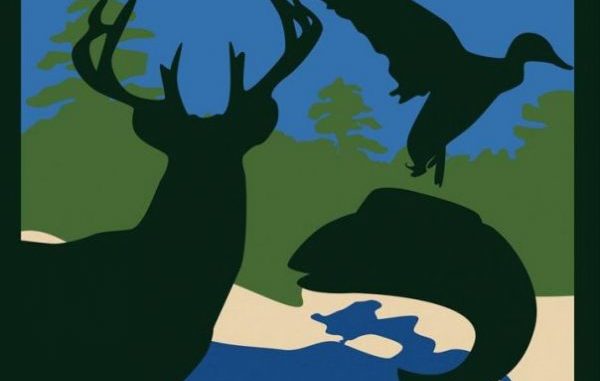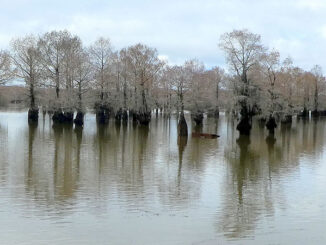
LDWF crews in helicopters, airboats to work to control noxious aquatic vegetation.
Aerial spraying of giant salvinia is set to begin today on Lake Bistineau in an effort to control the aquatic vegetation that has taken over the reservoir, the Louisiana Department of Wildlife & Fisheries announced.
Helicopter crews will conduct the spraying over two days, with workers in airboats following up with additional spraying in areas of thick concentration among dense cypress trees, the LDWF said.
The aerial spraying will be applied to selected areas where giant salvinia growth is particularly heavy.
“A helicopter will be used to spray herbicide on approximately 800 acres of giant salvinia,†explained LDWF Aquatic Plant Control Coordinator Alex Perret. “Areas that will be treated include the southern portion of the lake, which has recently experienced a surge in growth.
“Most of the large mats are located on the western side of the lake.â€
The heavier concentrations of were restricted to the northern portion of the lake. However, heavy rains have pushed the plant material over a Department-installed control boom into the southern portion of the lake, which is relatively open. With nothing to restrict the plant’s reproduction, growth exploded in these open areas. Fortunately, these large mats are easily treated in open waters.
With cooler temperatures moving in, results may be delayed, but the overall effectiveness of the herbicide will not be impacted. Results are expected within three days, but it could take up to three weeks for the plants to completely sink.
None of the herbicides to be used are harmful to lake ecosystems, animal life or humans, and are approved by the EPA. Activities will not be restricted on the lake, but notices indicating the areas to be sprayed will be posted at all boat ramps in the area. Department personnel will also be on hand to ensure no boaters are in the areas to be sprayed.
Giant salvinia is a free -floating plant that does not attach to the soil, but instead remains buoyant on the surface of a body of water. The invasive, aquatic plant was discovered on Lake Bistineau in February of 2006 and has the potential to double in biomass every three to five days.
